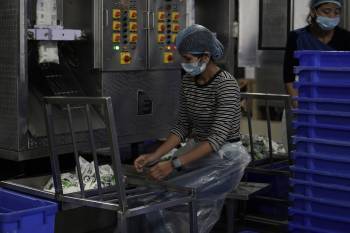SHILLOMG, 11 January 2023: India is one of the world's top producers of products related to animal husbandry and livestock. In India, dietary habits have changed as a result of changing lifestyles and increasing per capita income. An increase in demand for livestock products is being caused by rising consumption of milk, meat, and eggs.
Over 20.5 million people in India are reliant on livestock for their means of subsistence, making the Indian market for animal husbandry worth INR 930 billion in the year 2020.The sector currently makes up 25.6% of the agricultural GDP and 4.11 percent of the overall GDP, which is significantly less than its potential. Due to the topography, climate, and socioeconomic circumstances of Meghalaya, only about 10% of the state's total land can be used for agricultural purposes. A popular source of secondary income the villagers rely on is raising livestock.
The application of modern technologies has raised the potential for commercial livestock and poultry farming as a full-time occupation for a decent living. Meghalaya's annual growth rates for milk, eggs, and meat over the last three years have been 2.76 percent, 1.47 percent, and 2.95 percent, respectively.
Although breeding cattle for commercial dairy production is a relatively new concept in Meghalaya, there has been a high growth in the consumption of dairy products in the state, which has led to commercial success for dairy farmers. Meghalaya has some of the best dairy, draught, and dual-purpose cattle breeds. Many of these breeds contain advantageous genes for rapid growth, profusion, and adaptability.
Meghalaya Milk Mission
The Meghalaya Milk Mission, launched by The Government of Meghalaya, led by the Hon’ble Chief Minister, Shri Conrad Sangma, seeks to replicate the structure of the White Revolution in India by encouraging new farmers to participate in the development of community-based dairy cooperative societies and community ranches.
Under the initiative, 66 dairy co-operative societies, 588 beneficiaries with 1,066 cattle have been provided INR 25.4 Cr of financial support. The mission's goal is to educate and train dairy farmers to produce hygienic milk to boost rural productivity and prosperity.
In order to improve the economic and nutritional status of the Meghalayan population, the State Government launched a INR 209-crore Piggery Mission, uplifting the incomes of over 25,000 households. For generations, pig rearing has been a crucial source of income in the state.
Piggery Mission
The Piggery Mission aims to affect a radical shift in domestic pork production. The mission's primary objective is to establish economically viable, self-sustaining breeding and fattening units throughout Meghalaya. Through the mission 253 co-operatives have already received INR 44.85 Cr in monetary grant. 1109 units sanctioned for breeding 3866 units sanctioned for fattening Fisheries play a very important role in Meghalaya, not only in the creation of livelihoods for the farmers through a variety of income-generating activities such as fish culture and marketing, but also in value chain management via ornamental and recreational fisheries as well as tourism.
Meghalaya State Aquaculture Mission
The Government launched the Meghalaya State Aquaculture Mission 2.0 with a INR 378 Cr investment. In comparison to 2016–17, fish production increased by 30 percent in 2020–21. In 2020–21, the production of fish seeds rose to 13.79 MT.
A further 1,400 Ha of water has been set aside for fish farming. 7,000 fish farmers have benefited from the ongoing Meghalaya State Aquaculture Mission. To make the most of upcoming opportunities in the industry, the mission is actively enhancing vital aspects of aquaculture in the state, such as area and productivity expansion; critical infrastructure development; establishing sanctuaries for conserving indigenous and endemic species; and capacity building in terms of human resources.
Previously, the local poultry industry in Meghalaya had very low productivity, producing an average of 105 eggs per layer, whereas the improved birds now produce 200-230 eggs per layer or more. Through the introduction of improved breeds, the state's Poultry Development Program has sought to increase the productivity of the state's poultry. Efforts are also being made to commercialize the poultry industry by providing poultry farmers with convenient marketing facilities.
Under the leadership of CM Conrad Sangma, the Meghalaya state government is working to create a development-friendly environment through initiatives such as the Meghalaya Milk Mission, Piggery Mission, and Meghalaya State Aquaculture Mission 2.0 for the expansion of rural entrepreneurship and the improvement of rural living conditions.
Meghalaya is determined to achieve its goal of becoming self-sufficient in terms of resources and infrastructure and to be a high-value contributor to the nation's success in the animal husbandry industry.




















